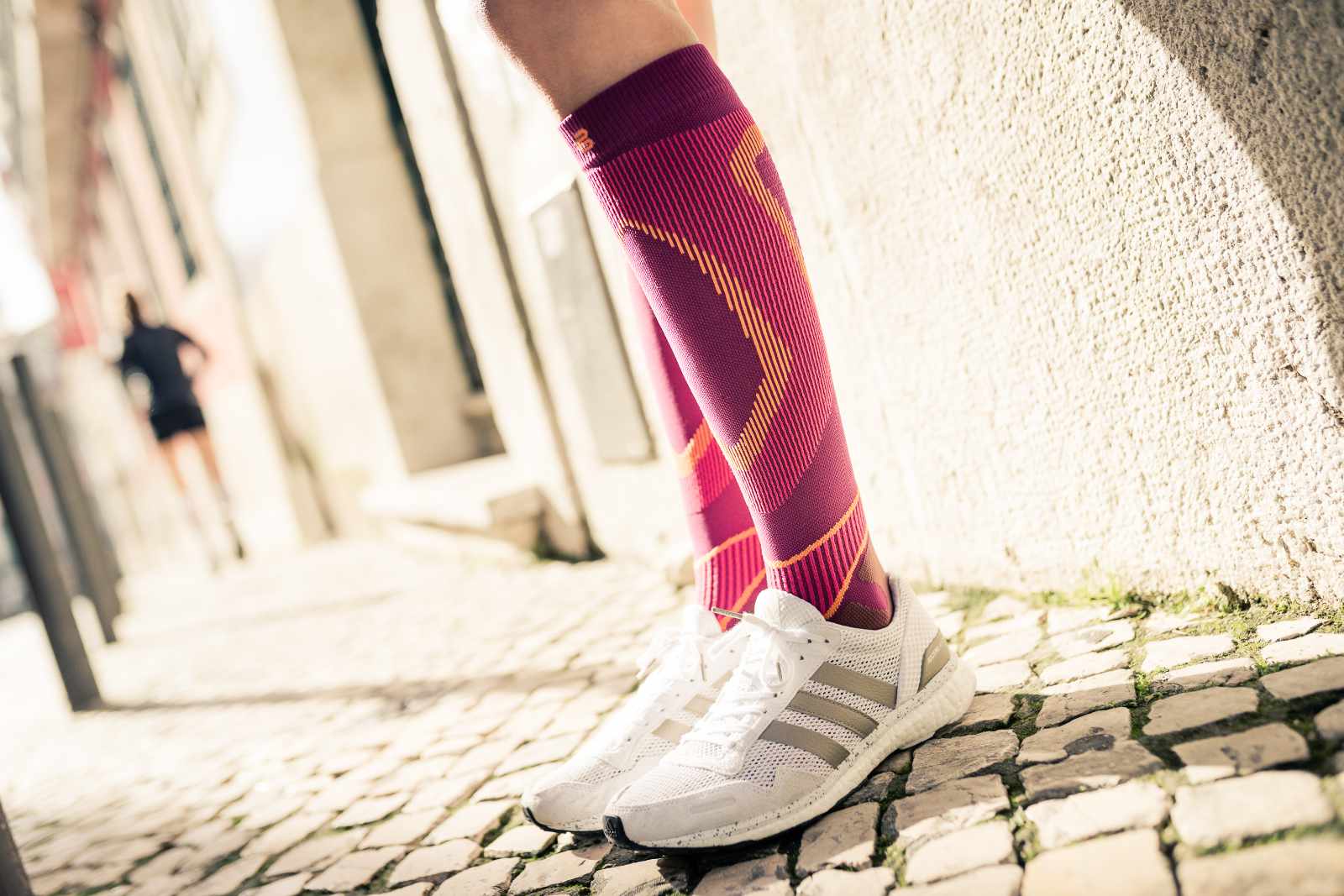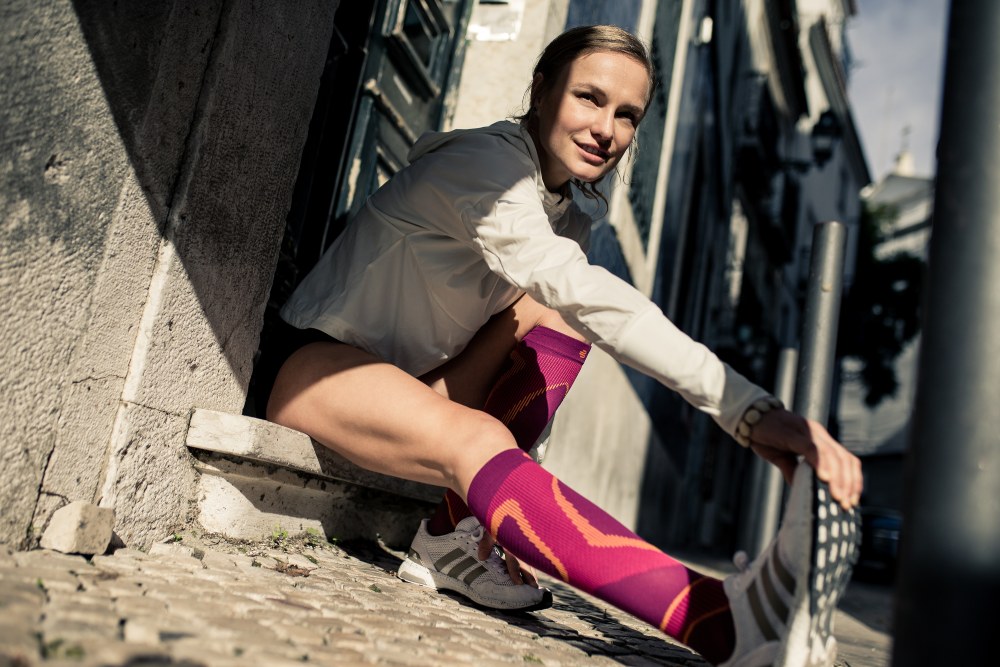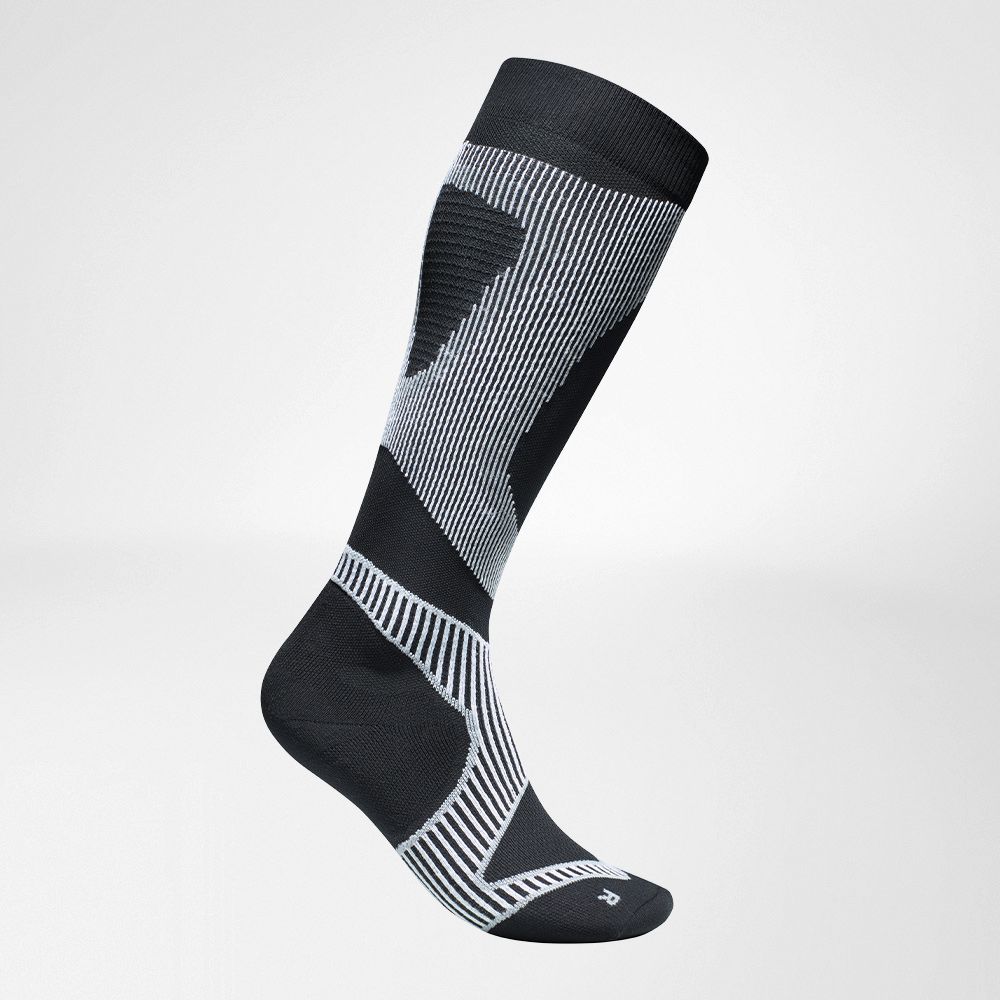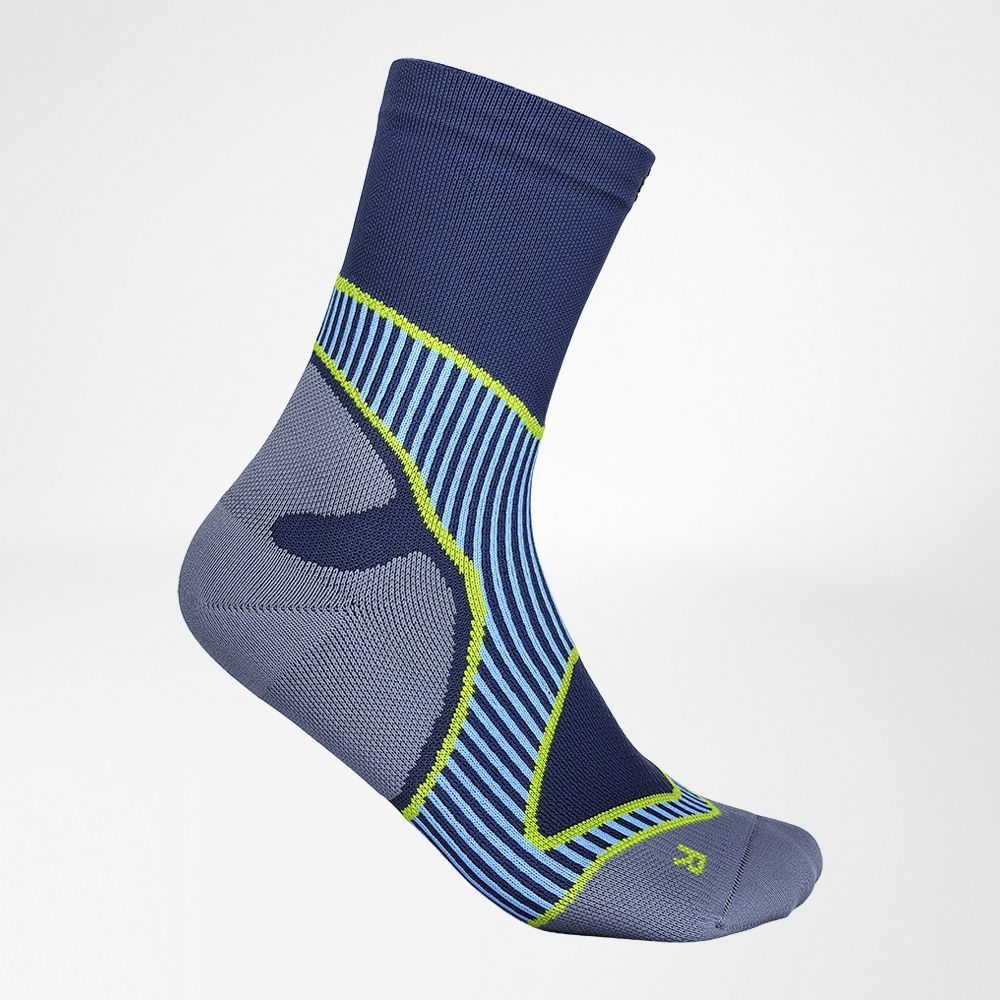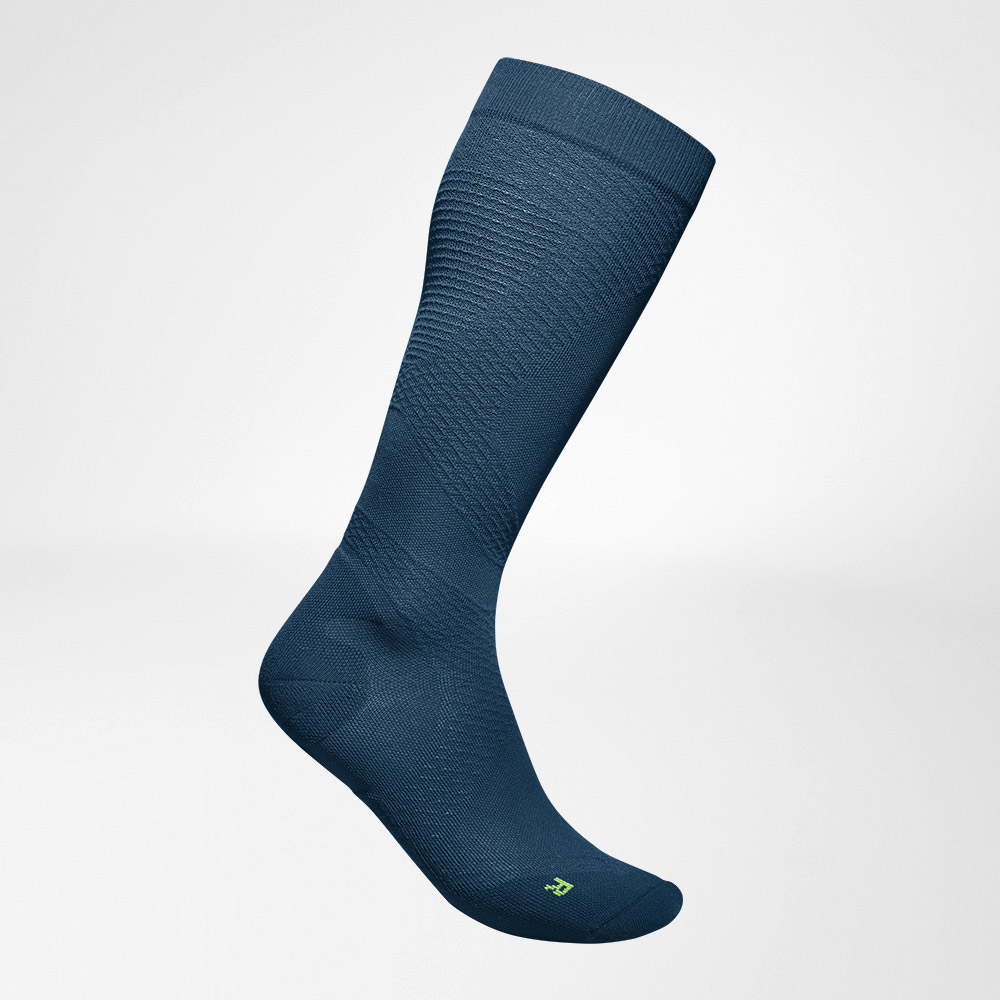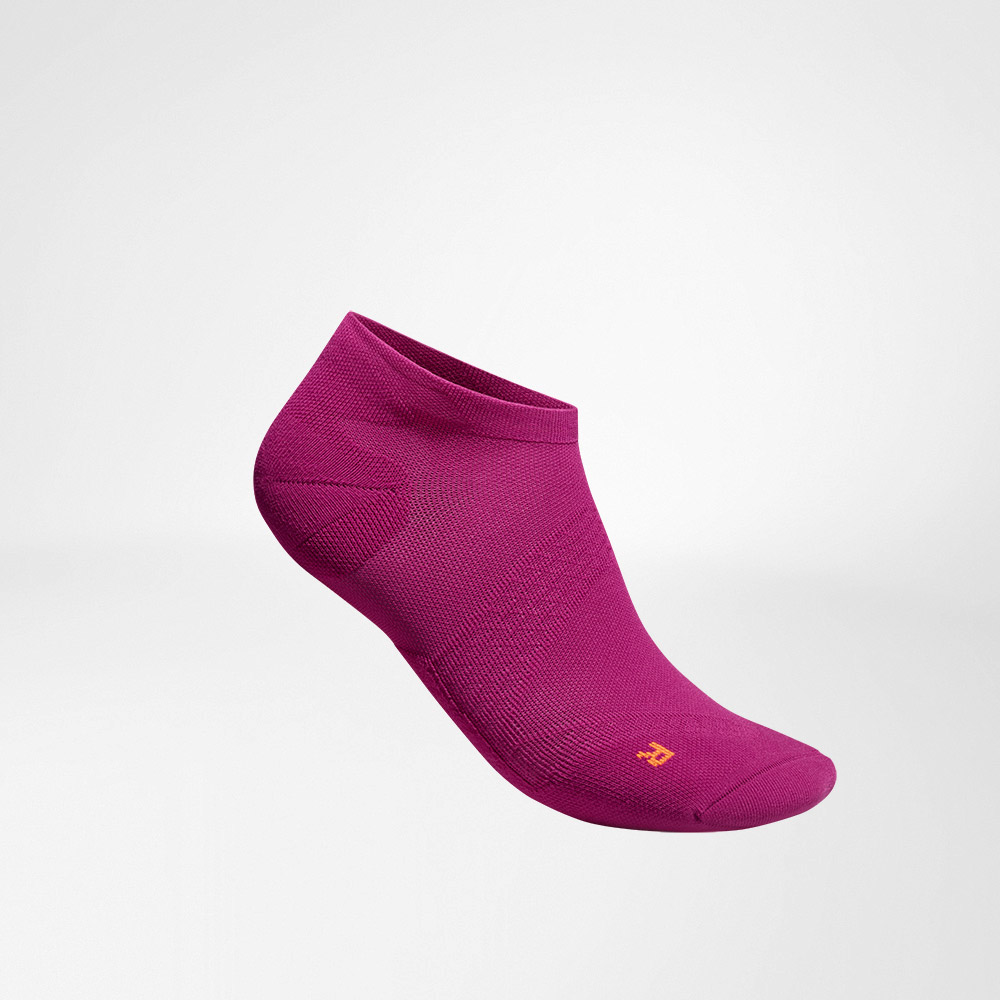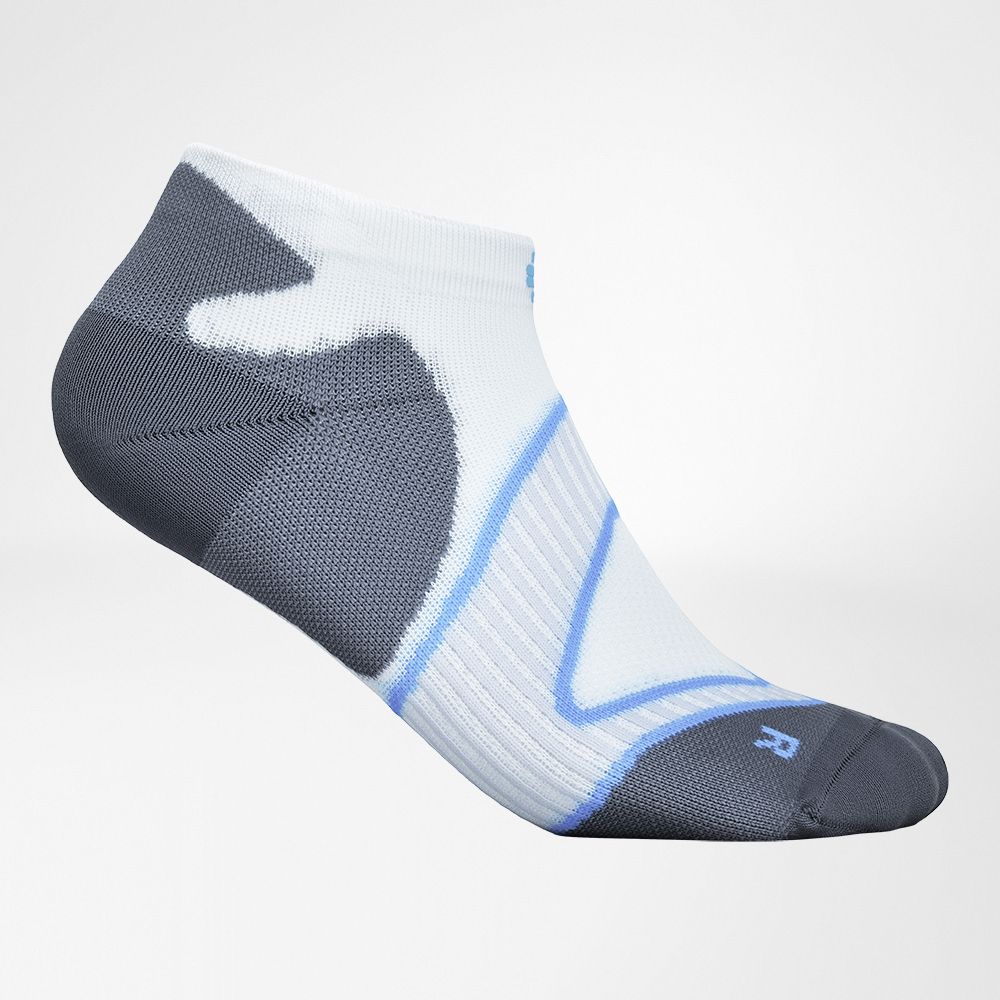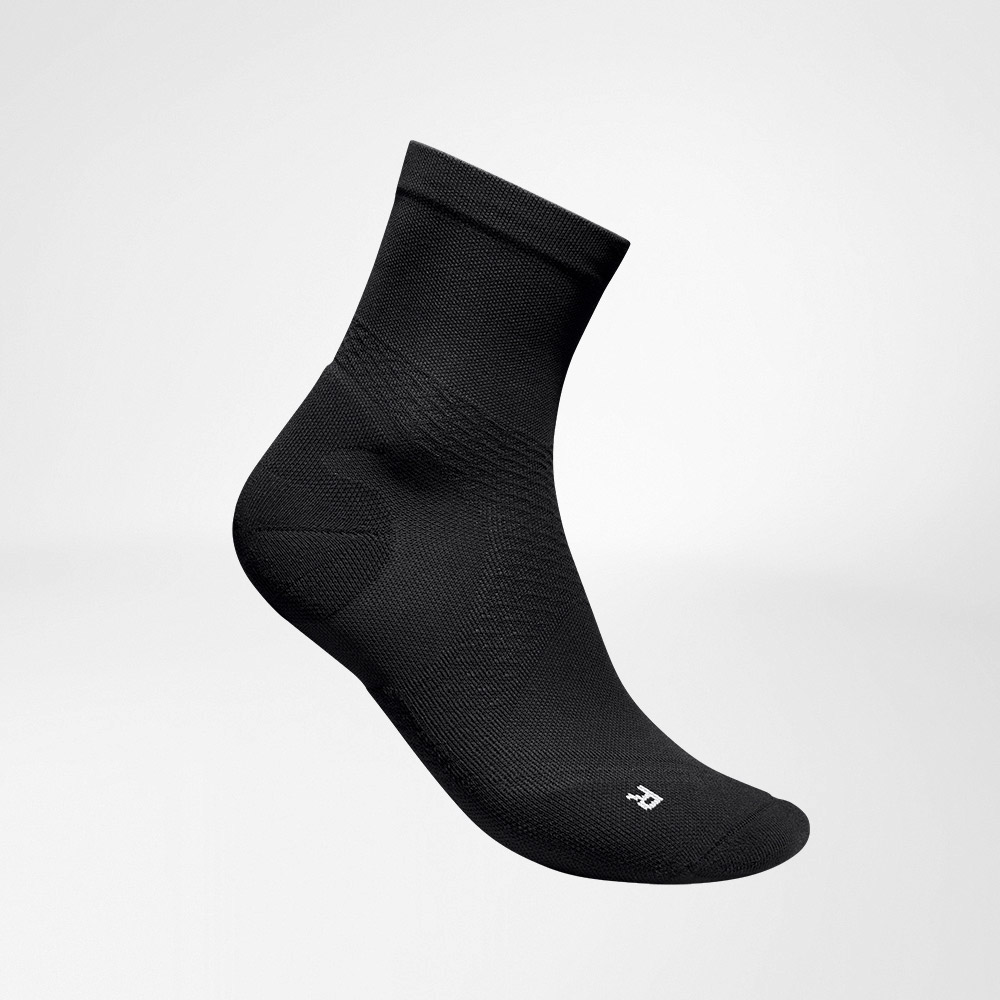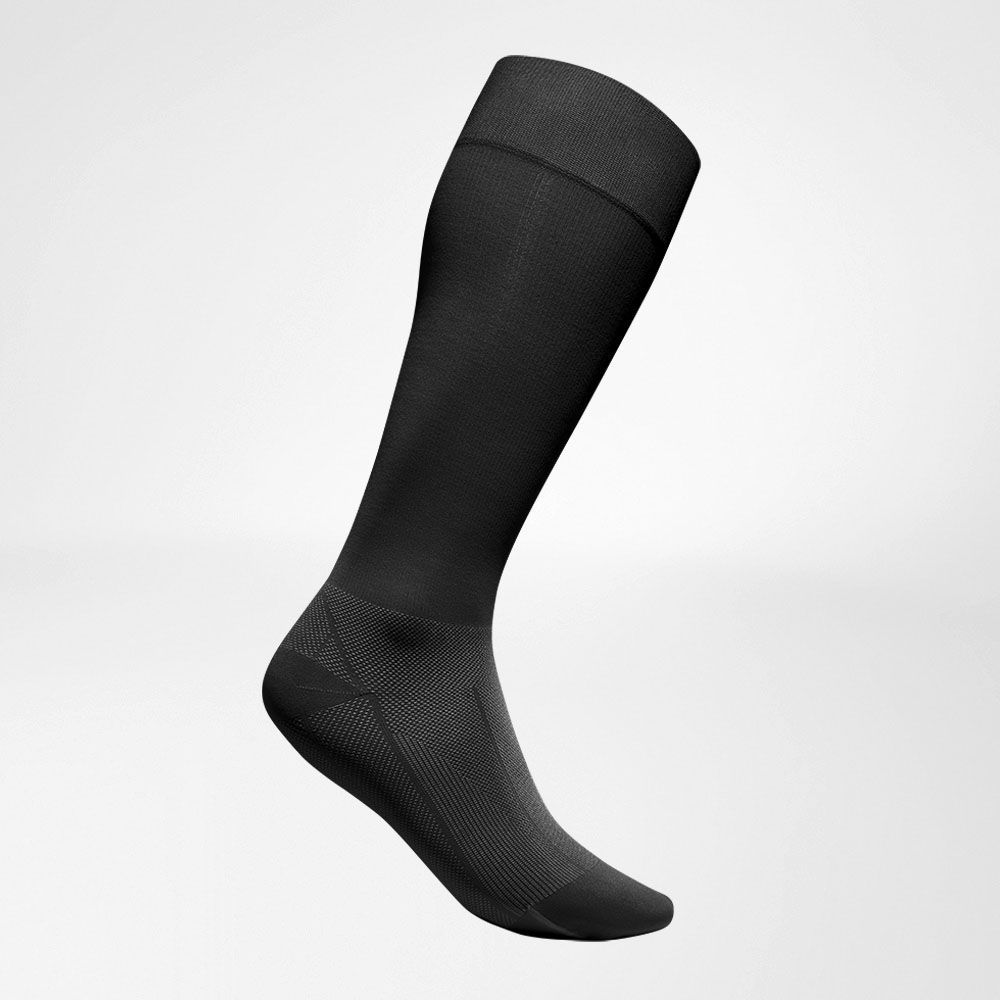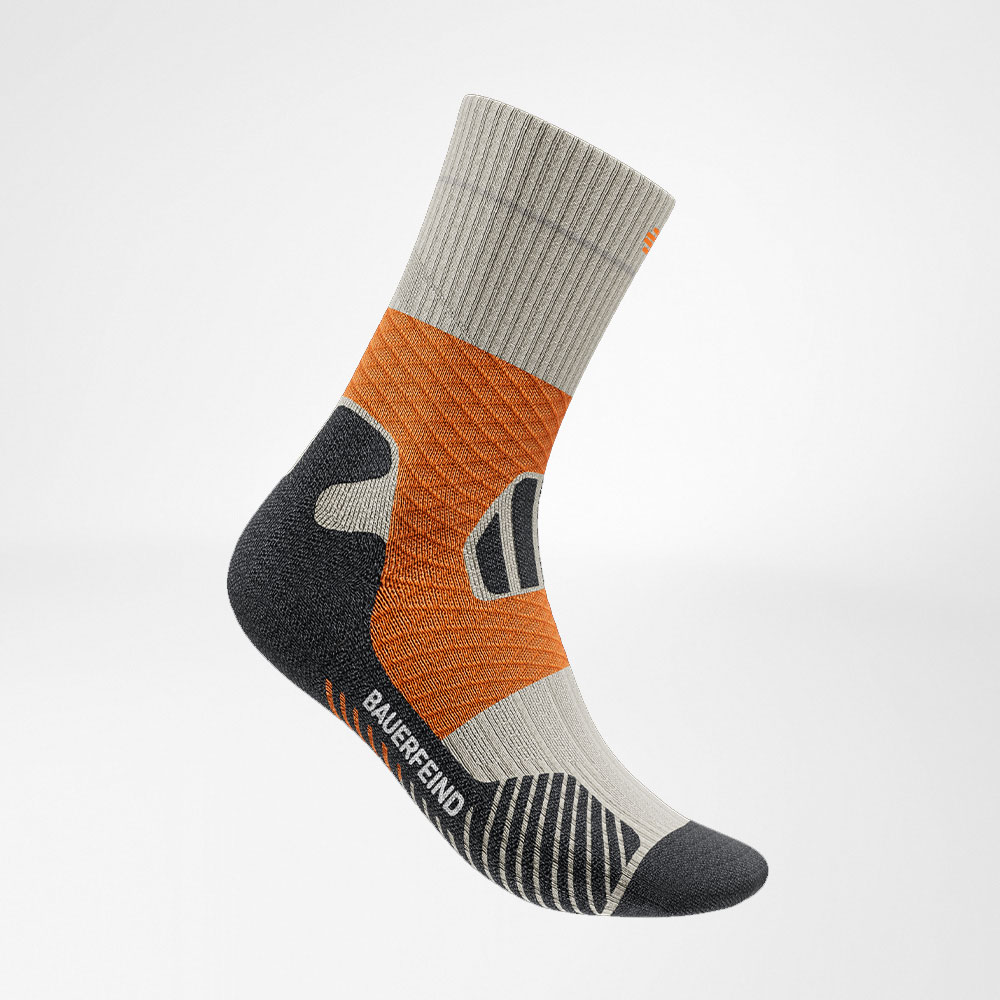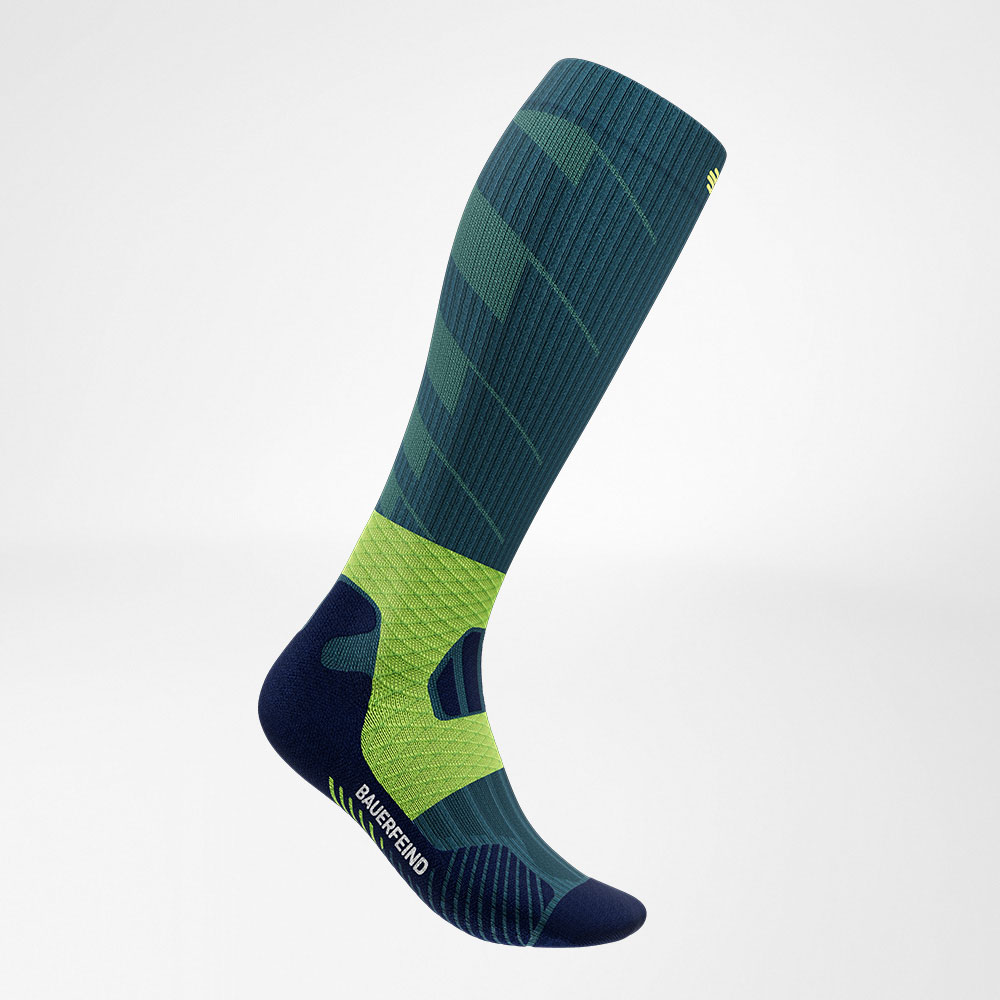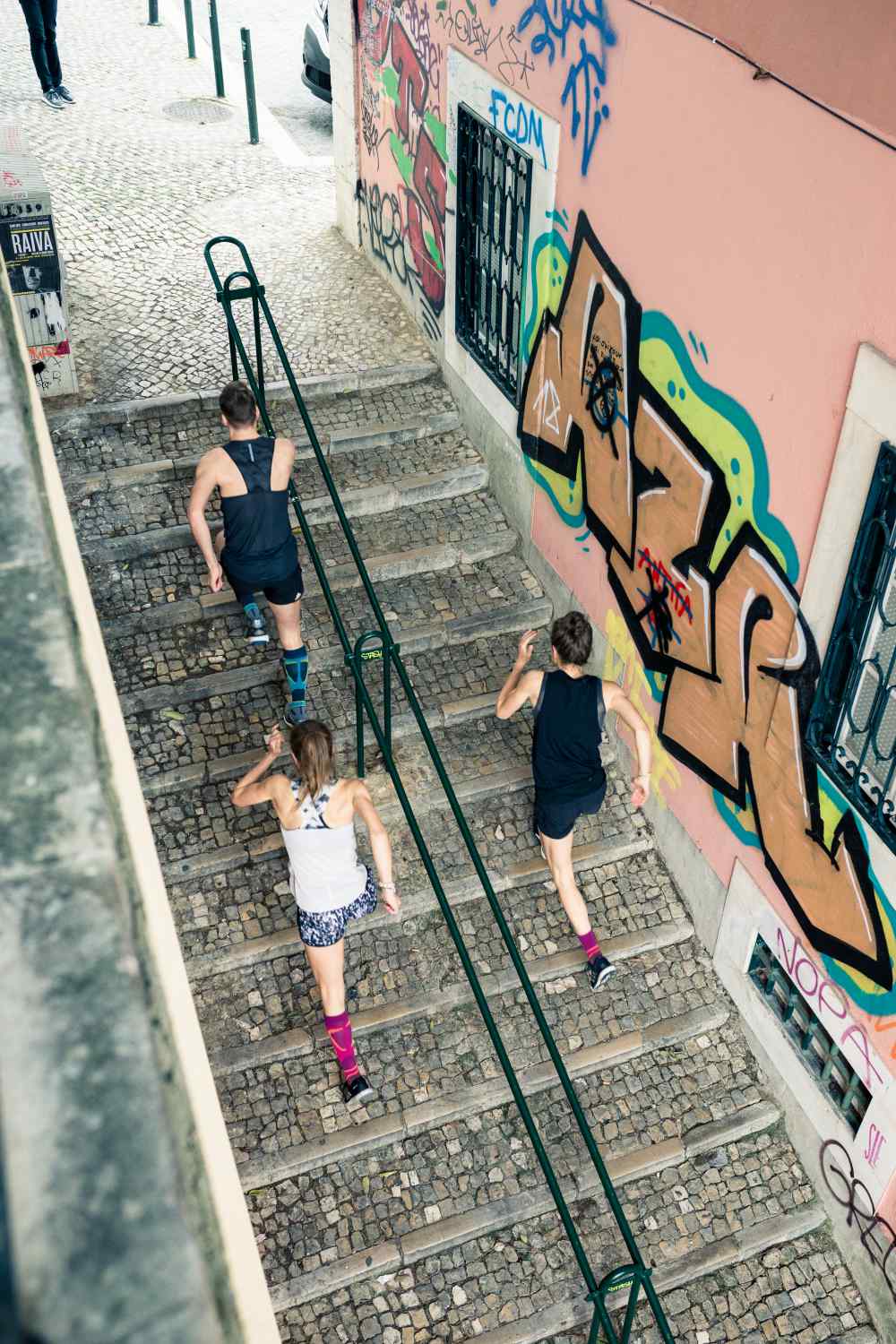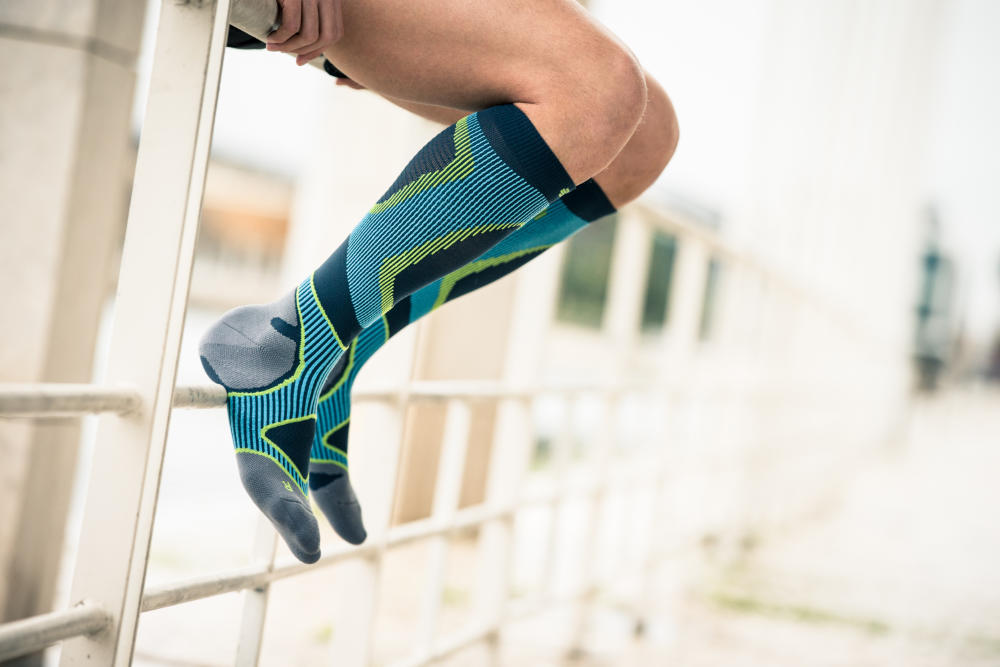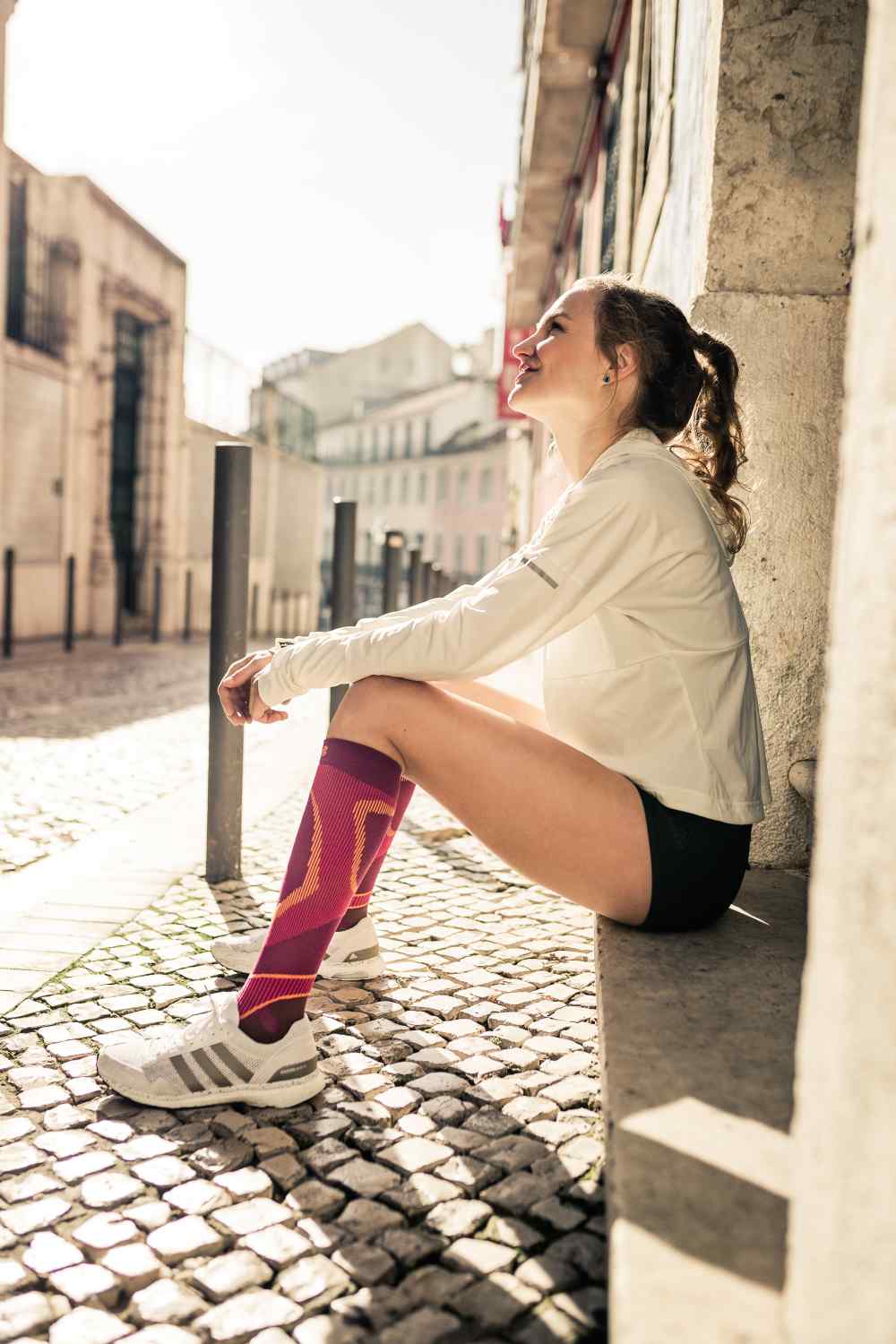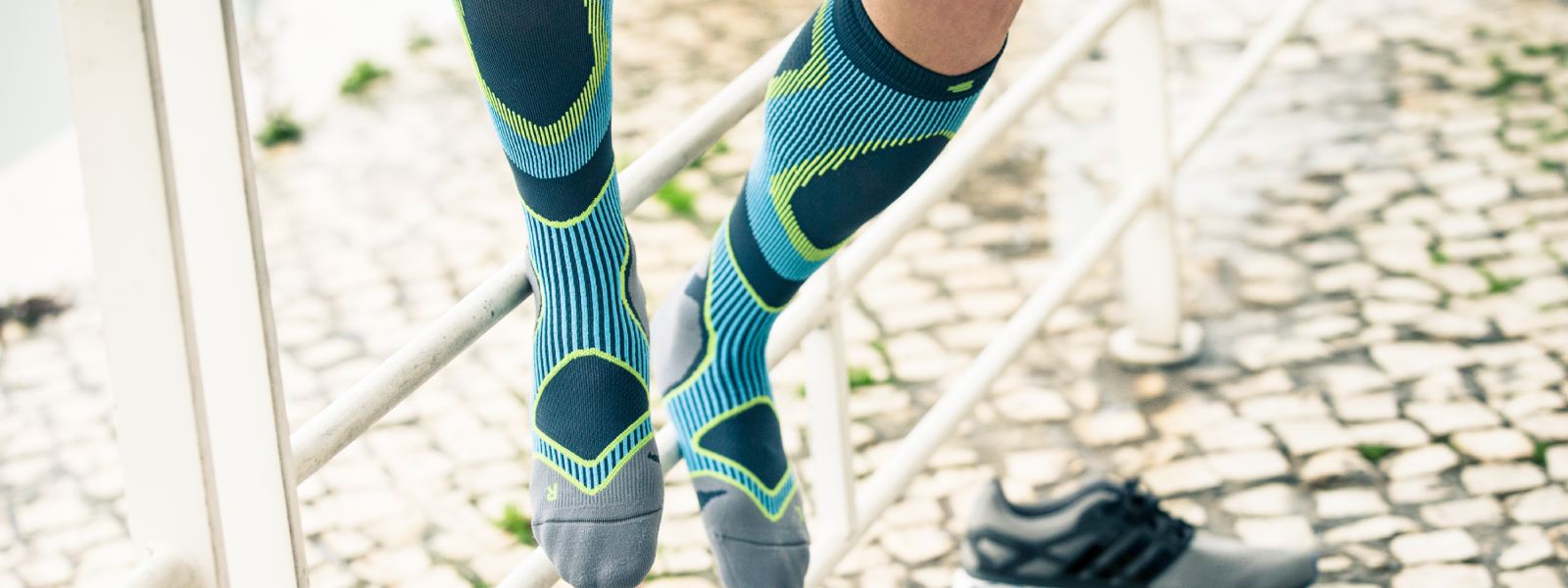
Running Socks with Compression
Buying Running Socks
Things to consider
Running socks seem to be a dime a dozen nowadays, or as common as pebbles and roots on your favourite running track. Just like each pebble is slightly different from all the others, similarly designed socks by different manufacturers all differ from each other when it comes to wearing comfort, functionality and breathability.
This is why we have put together a little shopping guide for running socks for you that will hopefully help you to find the ideal socks for your runs.
The most obvious difference between running socks and the socks most of us wear daily is the material they are made from. Common “everyday socks” are mostly made of cotton, polyamide (nylon) and elastane. Sports and running socks, on the other hand, tend to be made without cotton. There’s a simple reason for this: while cotton absorbs moisture well, it is less accommodating when it comes to releasing it. Especially when running, such moisture increases the likelihood of unpleasant friction and blisters.
Running socks also stand out because they often come in striking colours with contrasting zones that have a special structure or are cushioned to protect the foot’s most sensitive areas such as the toes, heel and Achilles tendon. In addition to their visual appearance – an aspect that is becoming ever more important, especially for long compression socks – this design ideally reflects the anatomy of the human foot and provides support exactly where the foot needs it when running long distances.
The way in which running socks are produced provides for added wearing comfort: since they are made using a circular knit production process, there are no bothersome seams in sensitive places that may cause unpleasant pressure in running shoes.
Another difference isn’t quite as obvious but also extremely important. Unlike everyday socks, running socks are marked with a little “L” and “R” to indicate the correct sock for the left and right foot. And this is why: the functional zones for the instep, midfoot, heel or the Achilles tendon in sports socks are positioned for the respective side, and their effect is optimized for either the left or the right foot. There is another reason: the longest part of the foot is usually the inside. The longest point of regular socks is in the centre, so socks may form folds in the area of the little toe and these may cause red marks. It goes without saying that this should be avoided, especially when running for several miles.
Owing to the various characteristics that good running socks should have, they cannot possibly be quite as cheap as everyday socks. However, you will not regret investing 15 to 20 euros for short or medium-length running socks, or 40 to 50 euros for long compression socks. You are rewarded for your investment with socks that do not only adapt perfectly to your body shape, provide relief for sensitive areas such as the toes, heel and the Achilles tendon, and whose functional fibres wick away moisture, but you will also receive a durable product with high-quality finishing. This type of socks is usually easy to wash (don’t use fabric conditioner!), and they will be your companions over hundreds of miles across roads, mountains and forest tracks.
- The material has to be right! We’ve mentioned it a few times: the right material may well be the most important property of good running socks. The socks will be directly on your skin after all and very tightly so. That’s why breathability is a must. At the same time, however, the knit must be close enough to provide stability and allow for a compression effect. Last but not least, the sock quite simply has to feel good. Trust your instincts here and you can’t go wrong.
- Men or women – that’s the question! It may seem a little dated in this day and age: when it comes to running socks, it makes sense to differentiate between sexes, as the socks have to exactly match the anatomy of the feet, and they must not slip. Women’s feet tend to be less bulky than those of men, so the sock design should be tailored towards the respective anatomy. By choosing socks intended for your gender, you’re more likely to find socks that are an ideal fit.
- The one and only (seam)! It is thin and positioned in the toe area at the front. The circular knit production process allows for high-quality running socks that don’t have any additional seams on the sides, and the risk of unpleasant friction or red marks is therefore reduced.Es kann nur eine (Naht) geben! Und die ist dünn und sitzt vorn am Zehenbereich. Durch die Herstellung im Rundstrickverfahren haben hochwertige Laufsocken darüber hinaus keine weiteren Nähte an den Seiten – und damit weniger Potenzial für unangenehme Reibung oder Druckstellen.
- A “real heel” is a must! The heel area of socks is subjected to great strain, which is why a suitable production process – called cylinder knitting – is used to reinforce this particular area. This is where the “real heel” comes in. As an interim step in production, it is knitted directly into the socks, after the footlet has been completed. You can spot a “real heel” from the sock’s pronounced L-shape as well as the seams and stitch design in the heel area. A “fake heel” is merely pressed into the finished sock and is, therefore, less durable.
- The brand and look DO matter! Some people won’t like reading this, but a sophisticated modern look and an established brand are definitely indicators of quality, especially when it comes to running socks. Competition has gained momentum in this area in recent years, which is why specialist manufacturers are dedicated to offering running socks featuring ideal wearing comfort and high durability, and they are willing to invest into research and (further) development of their products. This means that those few extra euros are a good investment into the sustainable improvement of your running experience!
- The “Made in Germany” seal of quality: Anyone who appreciates sustainable production processes, fair social standards, high quality and good customer services will be unable to avoid the traditional quality seal in Germany’s national colours black, red and gold. The same rule applies here: spending a few extra euros will pay off in several ways.

